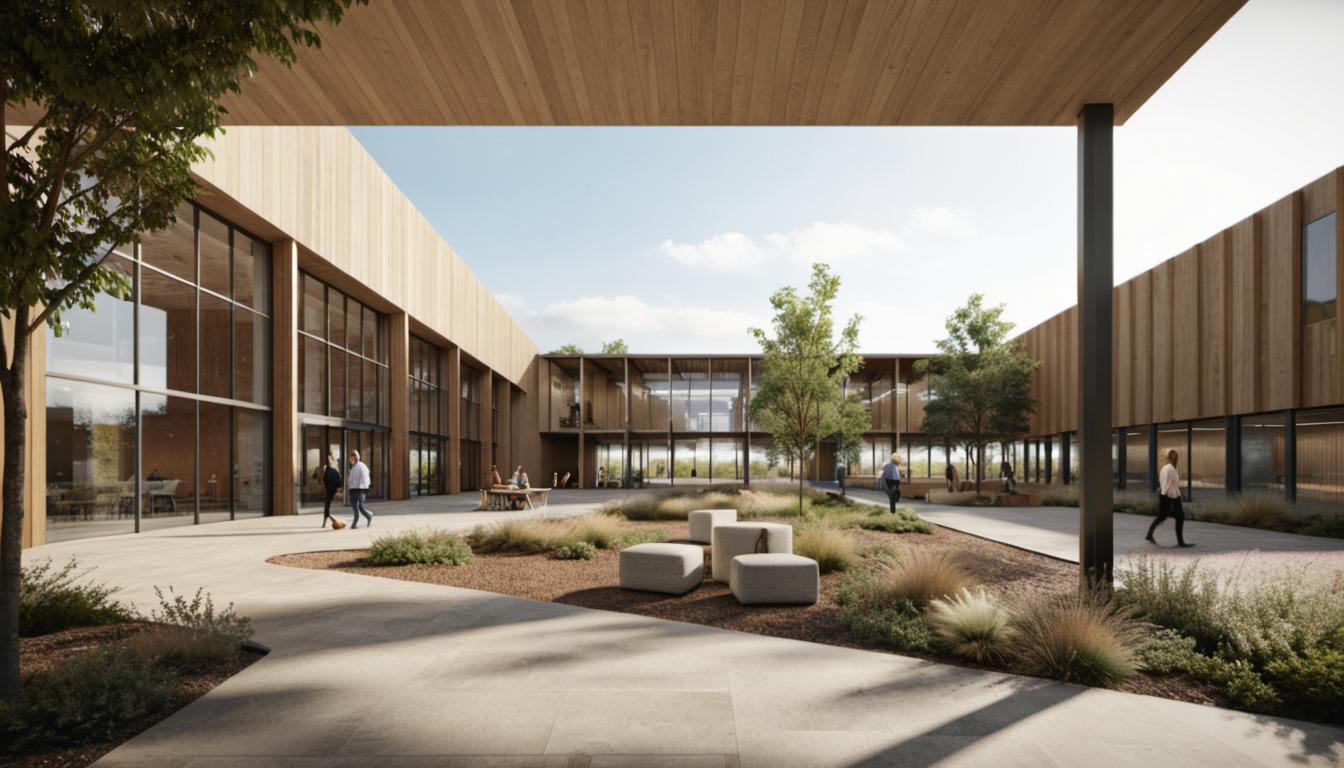The Innovation of AI Rendering
Defining AI Rendering
AI rendering is a blend of technology and creativity that models and visualizes architectural representations. At the heart of AI rendering are advanced machine learning algorithms that automate the creation of architecturally accurate and visually appealing images.
Improvements and Scientists behind AI Renderings
Through AI rendering, the process of visualizing architectural designs becomes not only quicker but also more efficient. Crucially, this advancement doesn’t go unnoticed, with top-tier scientists and technologists actively contributing to this field.
The Impact of AI Rendering in Architecture
The Power of Photorealistic Renders
One of the significant advantages of AI rendering lies in its ability to produce photorealistic renders. These high-quality images bring architectural designs to life, providing a realistic view of the proposed structure.
Improved Collaboration and Exploration of Design Variations
AI rendering technology promotes collaboration among architects, clients, and other stakeholders. It simplifies exploring design variations and making necessary changes, ensuring satisfaction for all parties involved.
The Technology Behind AI Renderings
The Role of Neural Networks
Neural networks, mimicking the human brain’s ability to process data and identify patterns, lie at the core of AI rendering. These networks accelerate calculations related to light paths, color gradients, and textures.
Techniques Used in AI Rendering
Ray Tracing
Ray tracing is an AI rendering technique that traces the path of light through pixels in an image plane. This technique allows for high-quality visualization of the interplay of light and object surfaces in the image.
Path Tracing
Path tracing, another AI rendering technique, simulates light’s route or path, integrating various effects like reflections and diffusion to create a realistic image.
Monte Carlo Simulations
In AI rendering, Monte Carlo simulations introduce randomness to the simulation of light, aiding in the rendering of complex environments with numerous sources of light and diverse materials.
Relevance of AI Rendering in the Exploration Architectural Design Variations
AI rendering offers architects a platform to test multiple design variations while improving collaboration and communication with stakeholders. It allows for the efficient selection of optimal designs, owing to the ability to predict and visualize outcomes.
The Challenges And Limitations of AI Rendering
Despite the numerous advantages of AI rendering, it has its limitations. Notably, architects might experience lack of control over specifics, leading to inconsistencies in the final render.
AI’s Role in Sustainable Architecture
Choosing Energy-Efficient Designs and Materials
AI facilitates the selection of energy-efficient designs and materials. Through predictive modeling and computational design, architects can choose sustainable elements and visualize their effects on the environment.
Visualizing Eco-Friendly Elements
AI rendering allows architects to preview the impacts of green building strategies, including factors like natural lighting, solar heat intake, and insulation. It aids in evaluating the performance of these strategies, thus promoting eco-friendly design.
AI Rendering in Urban Planning
Simulating Objects
AI rendering can simulate objects within a proposed project, fostering a profound understanding of their interactions with their environment.
Visualizing Complex Urban Environments
AI rendering visualizes complex urban environments, offering a realistic view of the proposed project within the urban context.
Restoring and Preserving Historical Sites
AI rendering enhances the accuracy of recreating and preserving historical sites, producing high-resolution renders that bring history back to life with modern detail and precision.
Limitations Surrounding the Usage of AI Rendering
Lack of Control over Specific Details
While AI rendering automates a lot of processes, architects might find the lack of control over specific details challenging. This limitation might influence the final design’s aesthetics and practicality.
Inconsistencies in Final Render
Despite AI rendering’s promise of renewing architectural visualization, errors and inconsistencies may arise in the final render, leading to less than ideal outcomes.
AI as an Architectural Concept Ideation Tool
AI is a game-changer in architecture. While it may not replace human creativity, it undoubtedly enhances it. As a conceptual ideation tool, AI can simulate various design scenarios, providing insights for innovation and creativity.
FAQ
AI rendering contributes not only speed but also improved communication and collaboration, easing the exploration of design variations.
The primary techniques used in AI rendering are ray tracing, path tracing, and Monte Carlo simulations.
AI aids in predicting and visualizing the impact of energy-efficient designs and materials, hence promoting sustainability.
AI rendering simulates objects and interactions within complex urban environments, giving a realistic view of the proposed project within its context.
Notable limitations of AI rendering include the lack of control over specific details and inconsistencies in the final render.





